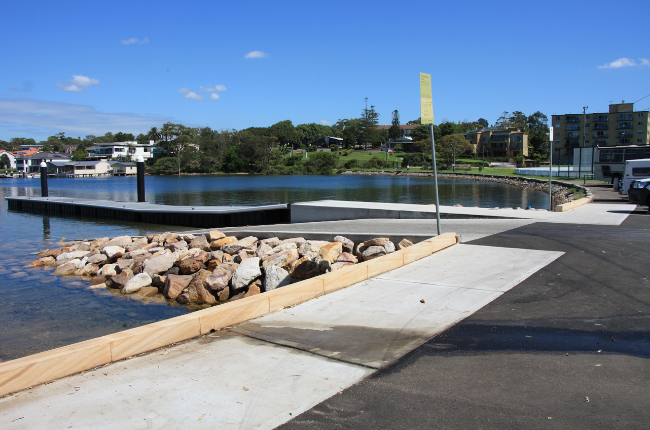With warmer weather and summer holidays approaching, NSW’s boating enthusiasts will soon be utilising boat ramps in droves. That means it’s time to turn the spotlight on council-maintained marine infrastructure.
Boat ramps can be extremely hazardous. Without proper maintenance, they can lead to trips, slips and other mishaps.
And if an accident does happen, councils may be liable for third-party property and physical losses.
So, now’s the time to take action and prep your ramps before the weather warms up. Statewide’s Regional Risk Managers walk us through what to keep in mind.
A personal injury compensation claim
In February 2015, a man and his family were at the beach for a picnic. While walking across the boat ramp there, the man slipped and fell – sustaining a traumatic head injury.
This beach comes under the jurisdiction of one of our member councils, and the man sued the council for injury compensation. He claimed:
- There were no signs in visible locations to warn him of the dangers of the area.
- The Council failed to ensure the ramp was regularly cleaned and inspected, resulting in it being hazardous.
In the end, the court ruled in favour of the Council. They were satisfied Council had taken sufficient precautions to reduce the risk of harm at the boat ramp.
Why maintenance matters
How did the court arrive at its decision?
The Council in question had complete records to show they had been up to date with their inspections, cleaning and other maintenance works.
They had a well-designed and strategically placed sign in the area that was visible to everyone approaching the boat ramp. The sign contained all the necessary information, including warnings and symbols of possible hazards in the area.
The claimant later conceded he did see the sign, but didn’t pay attention to its contents.
The key takeaway: When you’re proactive in upkeeping and maintaining boat ramps, you can minimise risk to the public – and protect your council against negligence claims.
Place boat ramp signage in easily visible places
Signs are an absolute must at beaches – especially near boat ramps.
While there is no specific Australian standard for beach signage, you can refer to other relevant standards and Statewide Mutual’s Best Practice Manual – Signs as Remote Supervision.
The Best Practice Manual will walk you through all the steps required to assess the site and design a suitable sign.
Ramp up inspection and cleaning
The build-up of marine life, including algae, weeds and shellfish make boat ramps slippery and dangerous.
To keep them in a safe and fully operational condition for boat and beach users, boat ramps must be cleaned and maintained regularly. Even more so prior to peak usage times, which includes school holidays and summertime.
Location plays a part in determining the frequency of cleaning regimes.
For example, weed and algae growth increases with warmer air and water temperatures. So councils in areas with a warmer climate might need to have shorter gaps between their maintenance programs.
It is a good idea to undertake regular inspections and keep records of water temperature and associated weed and algae growth. This will guide future cleaning programs and resource requirements.
Look out for these conditions
At every inspection, check that the ramp has no cracking or any other trip hazards. If there are uneven surfaces, consider options to reduce any vertical displacement.
Check for drop-off on the side of the ramp. This is an area where sand might have been scoured away. It is important to check these areas regularly.
Another area to be mindful of drop-off is at the toe of the ramp. Often scouring occurs here when engines are left running while a boat is on the trailer. Sand scoured from the toe of the ramp often deposits several metres out from the ramp.
This sand may need removing because it reduces water depth, posing a serious risk to boaters arriving or departing the ramp.
Put an inspection program in place
Approach the inspection, maintenance and management of boat ramps in a similar way to managing any other asset.
Having an inspection program helps you identify and address all known risks associated with boat ramps.
If you don’t have a program in place, here are some tips to getting started:
- Develop a boat ramp inspection, maintenance and management procedure.
- Create an inspection regime based on peak use times, weed and algae growth patterns, and water and air temperature.
- Inspect, assess and record defects.
- Enter the defects into your works program and tend to them based on their risk level and in line with the resources available.
- Record all the completed works, in detail.
- Maintain accurate records (since they may be referred to if you need to defend a claim at some stage in the future).
Need further resources?
If you’re unsure about how to proceed or if you have any concerns about your boat ramps, contact your Regional Risk Manager at Statewide Mutual for assistance.

